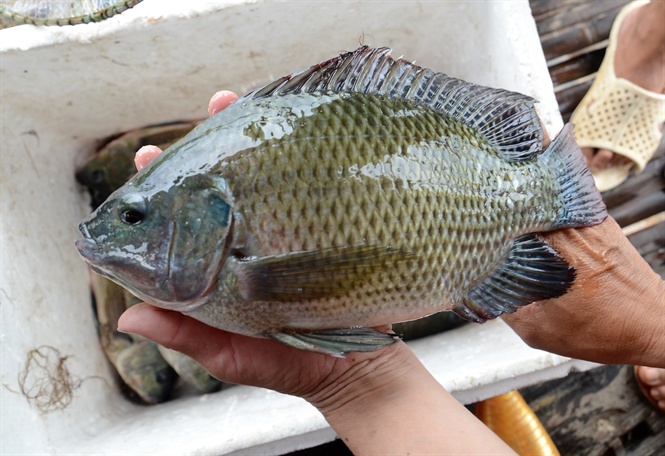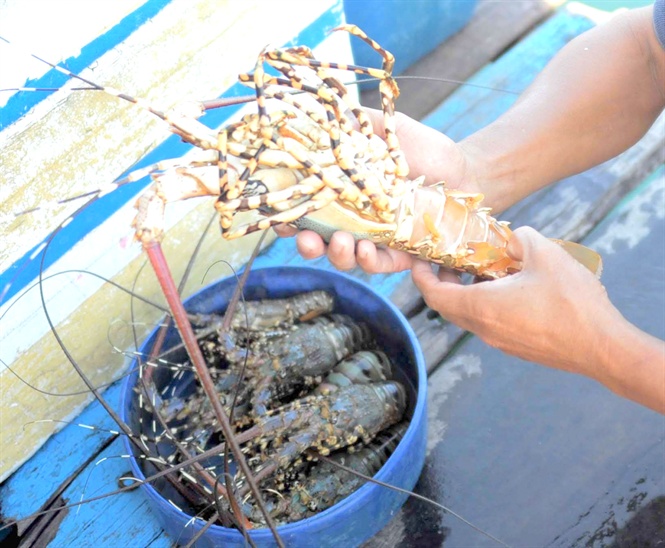SOME MORE LIVE SEAFOOD PRODUCTS ARE EXPORTED TO CHINA
12 Fri, 2019
Talking with Vietnam Agriculture, Mr. Ngo Hong Phong, Deputy Director of Agro-Forestry-Fisheries Quality Assurance Department said: At the request of Nafiqad, October 9, 2019, Vietnam Embassy In China informs the China Inspection and Quarantine of plants and animals issued a note of approval to supplement some of Vietnam's live seafood products such as flower clams (Meretrix), yellow clams (Paphia) and tilapia (Oreoochromis) on Vietnam's list of aquatic animals allowed to be imported into China.


The Chinese side also announced the List of Vietnamese aquatic animals allowed to be exported to this country (posted on the website of the General Administration of Customs of China at http://www.customs.gov. cn/customs).
In addition, China has just issued a number of regulations on conditions of farming facilities and packaging facilities for two live seafood products of Vietnam, crab and live lobster of Vietnam when exporting to China.
So what are the conditions and procedures for exporting live aquatic products approved by China?
Immediately after the Chinese side had announced the permission to add flower clams, silk clams and tilapia to the list of permitted exports to this country, on October 22, 2019, Nafiqad sent a written request to the processing aquatic facilities export to China and the Regional Agro-forestry-Fisheries Quality Center proposes to immediately implement a number of jobs to ensure the requirements and conditions for exporting live aquatic products that have been approved by the Chinese side.
Along with the 3 newly-approved live aquatic products that China has allowed to add to the list, up to now, Vietnam has a total of 48 live aquatic products allowed to export to China.
In order to export these live aquatic products to China, the aquatic processing establishments exporting to China must carry out the registration of evaluation and issue of export certificates to China for batchs of live aquatic products in accordance with regulations in Circular 48/2013/TT-BNNPTNT (amended and supplemented in Circular 02/2017/TT-BNNPTNT and Circular 16/2018/TT-BNNPTNT), and Nafiqad's documents guiding regulations/Chinese requirements for exporting live aquatic.

Tilapia has just been approved by China to import from Vietnam
Specifically, live aquatic exported to China must be packed at the facility on the list of allowed to export to China. The batch of live aquatic must be appraised by Nafiqad, certified by food safety and epidemic safety.
Particularly for live crabs, lobsters, tiger shrimp and whiteleg shrimp, the Chinese side requires more stringent conditions for disease control.
Specifically, what are those conditions, sir?
For live crabs and lobsters, according to information provided by the Vietnam Trade Office in China: after discussions with the Chinese side, from November 1, 2019, only the packing and raising crabs facilities, lobsters were on the list approved by the Chinese authorities and published on the website of the General Administration of Customs is allowed to export to this country.
Currently, at the request of Chinese authorities, Nafiqad has summarized and sent to China a list of 13 packaging facilities, 290 shrimp and crab farming facilities for export to this market.
For live tiger shrimp and whiteleg shrimp, farms must be monitored for diseases, including TSV (Taura), MBV, WSSV (white spots) and IHHNV; At the same time, it must be in the List approved by China.
Live aquatic exported to China must be certified by Nafiqad for each shipment. What are the conditions and procedures for obtaining a certificate, sir?
The issuance of certificates has been specifically guided by Nafiqad in Official Dispatch No. 2081 / QLCL-CL1 of November 7, 2013 on certification of live aquatic products exported to China.

There are 290 lobster and crab farms that Nafiqad sent to China for export registration
Accordingly, aquatic processing facilities exporting to China must provide full information on the farm (name, address and code - if any) or the address of the fishing area (including name of district and provincial administrative unit) when registering to inspect and certify the export of live aquatic batchs to China at the Nafiqad Regional Agro-forestry-Fisheries Quality Centers to serve for the certification of the consignments.
In case of live aquatic products originating from exporting to China: the farms must request to register with the local aquaculture management agencies to be granted codes (if the farms do not have the code number yet) strictly according to Chinese requirements.
Thank you Sir!
(According to Vietnam Agriculture)
Source: http://vasep.com.vn
Related Post
The true fishmeal carbon footprint
The established Life Cycle Analysis (LCA) methodology to assess the fishmeal carbon footprint only accounts for the vessel fuel and post-harvest processing energy while ignoring the carbon sequestration potential of fish.
View more
Freezing Tropical Fruits: Convenient and Effective Solution with Octofrost Machines
Tropical fruits are always a great choice for providing nutrition and fresh flavor to daily meals.
View more


